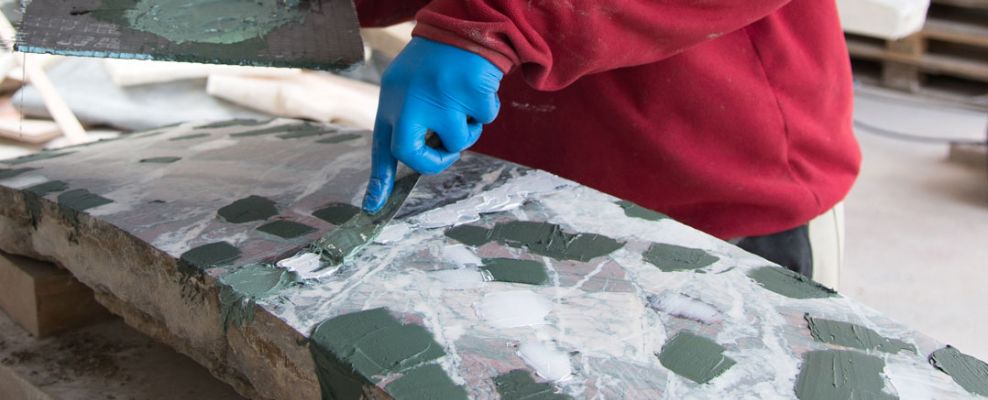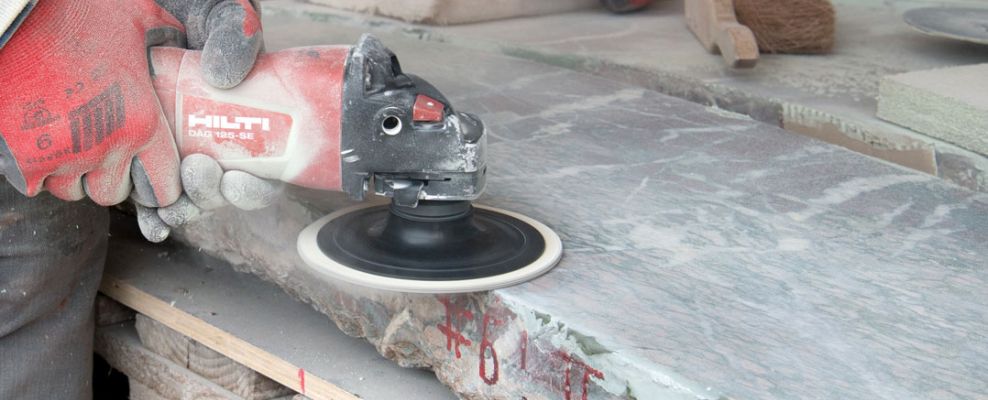MARBLE RESTORERS
An original aesthetic based on contrasts
| The marble restorers work on re-establishing the original esthetic appeal of the Latona fountain, based on contrasts between the matt gold of the lead sculptures, the brilliant white marble of the group of Latona and her Children and the colourful iridescence of the decorative marble work. Once they are dismantled, these marble slabs were transported to the restoration workshop. |
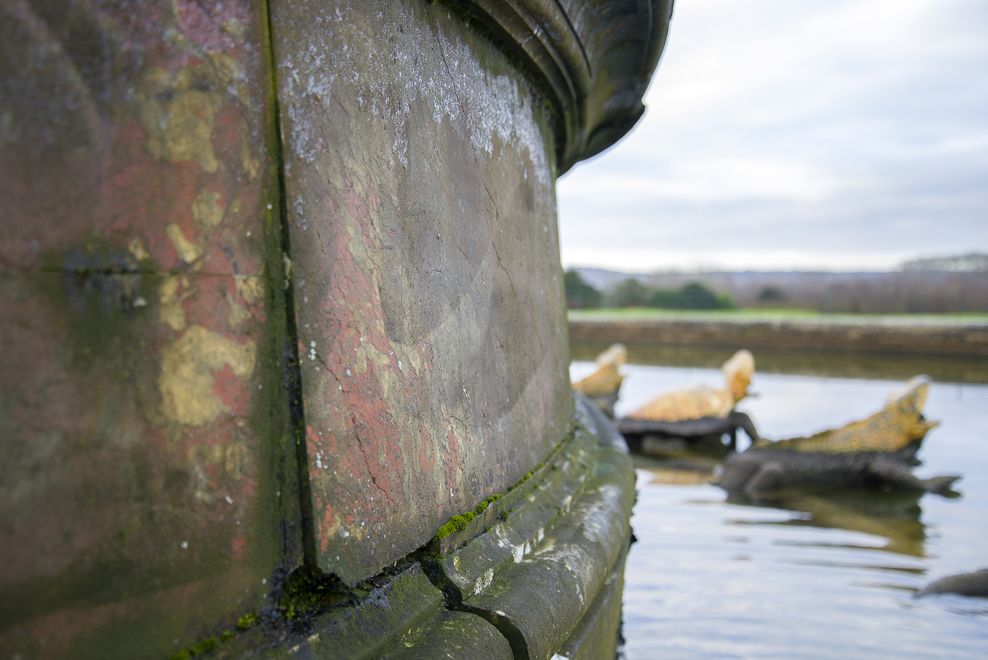
Marble figures of the Latona fountain before restoration © EPV / Thomas Garnier
The white marble of Latona in shelter
The frequent flow of water has considerably affected all the marble features of the fountain. Moreover, the sculpture group of Latona and her Children was the victim of an act of vandalism, so it was put into a shelter in 1989 and replaced by a copy made from marble powder. It was restored in 2012 and presented in the exhibition Versailles and Antiquity (November 2012 - March 2013).
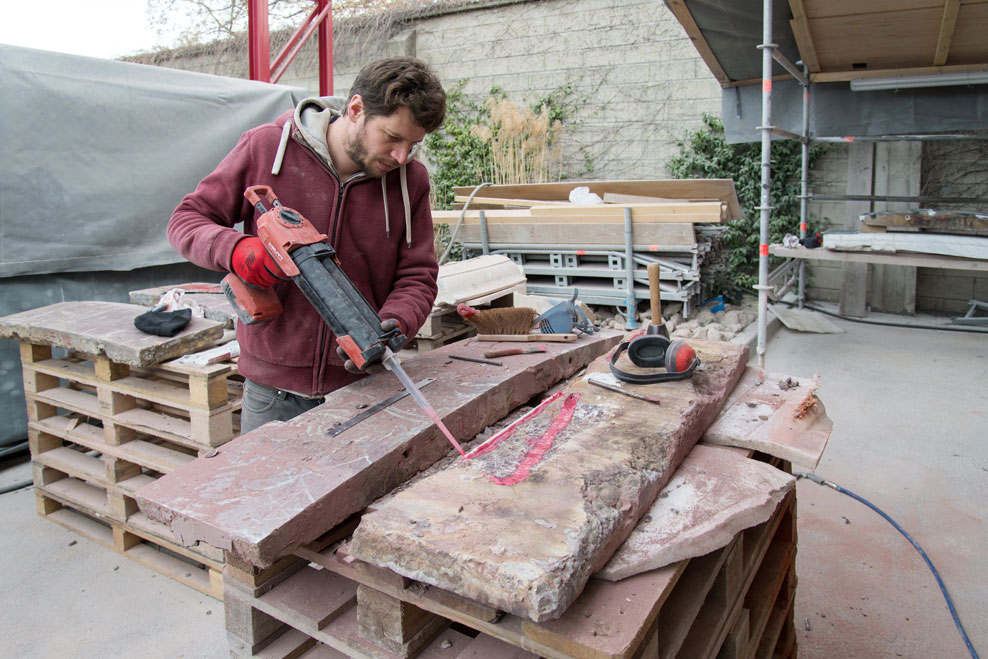
Pinning the marble © EPV / Thomas Garnier
A necessary restoration

Grafting a piece of marble © EPV / Thomas Garnier
Steps in the restoration: pinning and grafting the marble
After a first step of cleaning with water, the restorers undertake pinning work to consolidate the cracks in the most fragile stones. They drill a hole in the back of the stone and insert a fibreglass rod and neutral resin, a material specially designed for restoring works of art.
Then the marbles are grafted, which entails replacing a severely damaged or missing part with a marble component of the same nature, the same colour and with identical veins. The restorer cuts the piece of new marble to adapt it perfectly to its new location. With a highly resistant resin, he grafts the new part before making the final adjustments on the facing with light recutting.

Patching marble © EPV / Thomas Garnier
Steps in the restoration: patching and polishing the marble
Patching is then applied to fill in damaged areas and cracks in the stone. For this, they make a mixture of resin, marble powder and pigments that they apply with a trowel. For this delicate operation, the restorers use all their know-how and all their sensitivity to find the right colour so that the patching harmoniously fits in with the vein on the original marble.
To complete the restoration, the restorers begin by polishing the marble with a slightly abrasive disk, then using a disk with a finer grain. Lastly, they use sheepskin to finely polish the marble, returning it to its original shine and sleekness.
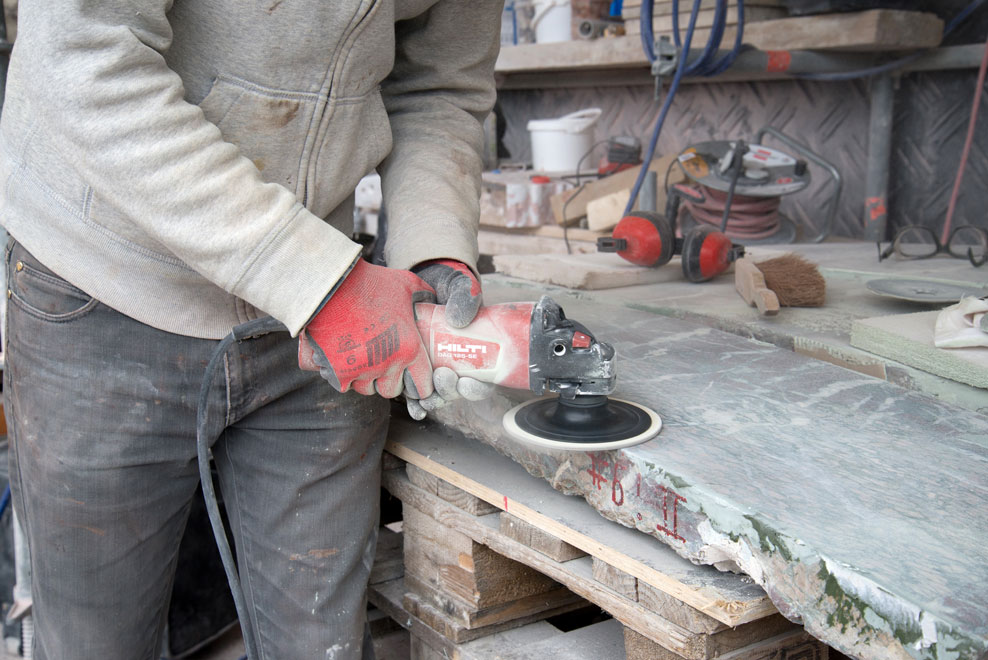
Polishing the marble © EPV / Thomas Garnier
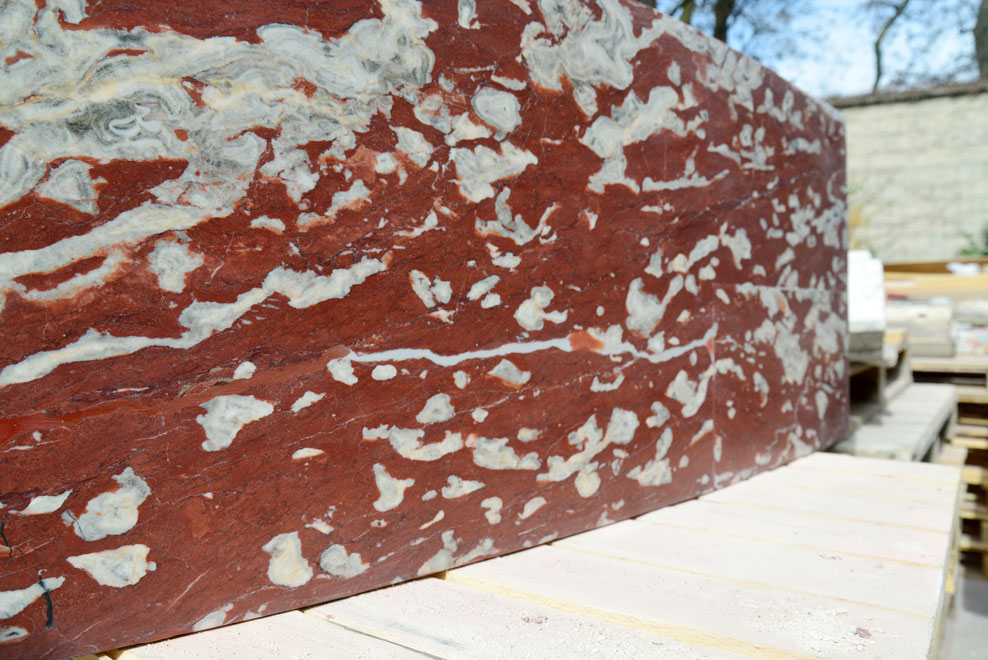
Restored marble © EPV / Thomas Garnier



